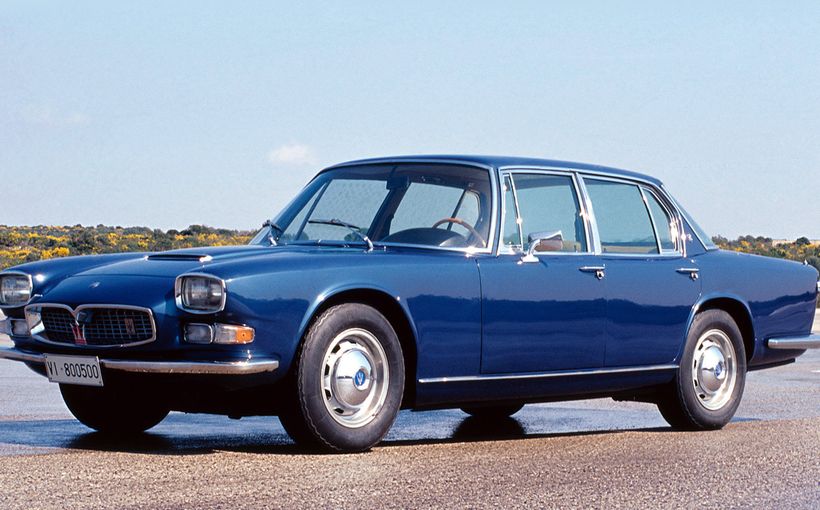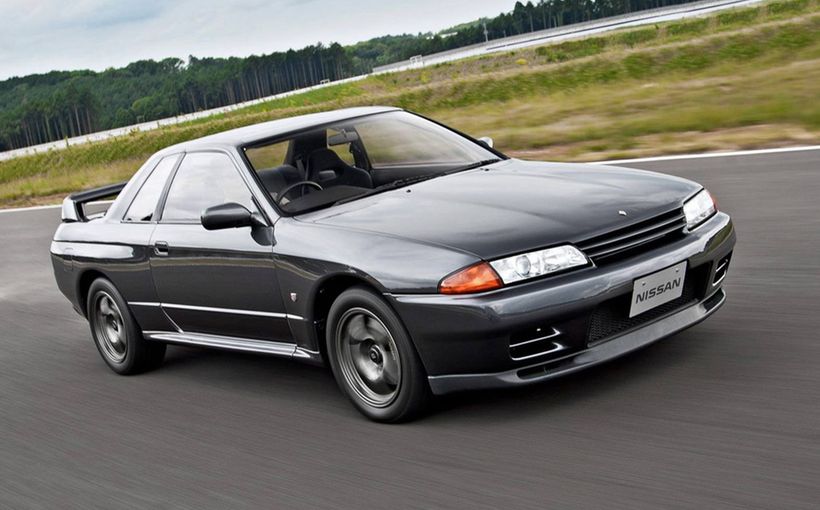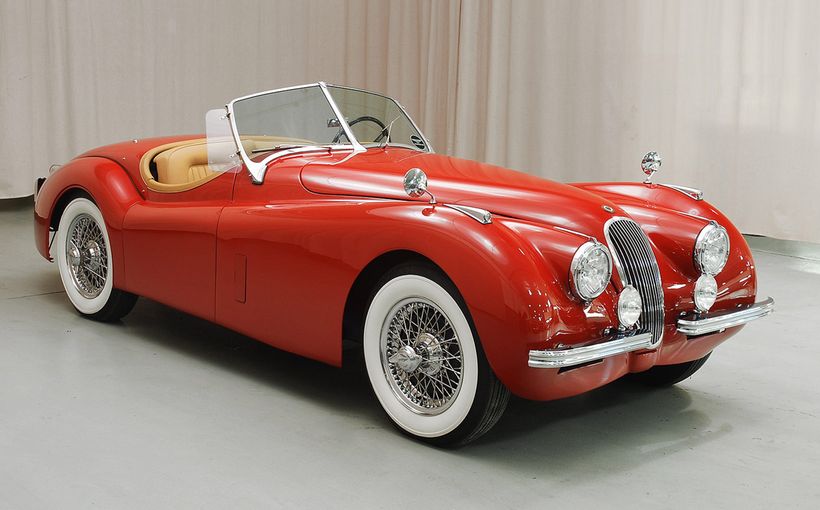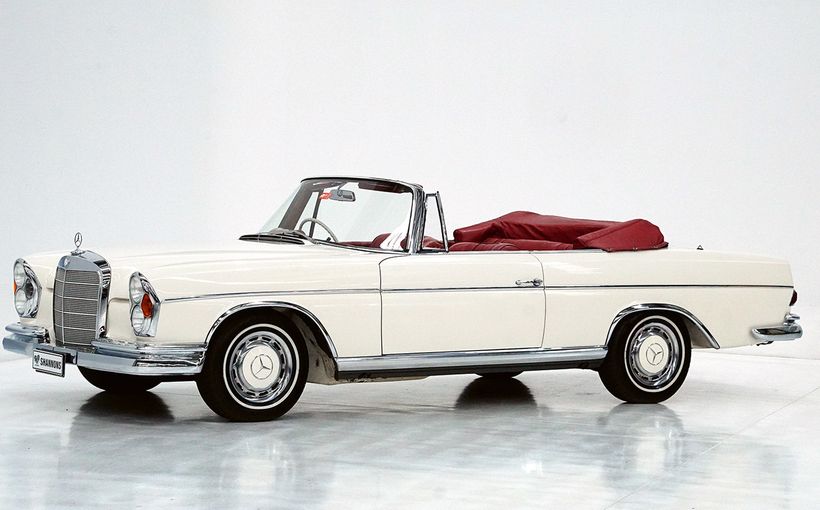DAIMLER SP250: The scuttle-shake sports car that helped scuttle Daimler

Arguably, Daimler’s first and only sports car was one of the company’s two or three most important postwar vehicles. The V8-powered fibreglass SP250 made its public debut in the US on 4 April 1959 as the Daimler Dart. On one level launching the car in North America made absolute sense because Daimler management believed that this would be its largest market. But it was a disappointing car in some respects and the naivity of the company’s bosses almost beggars belief. Did none of them read American motoring magazines or even popular magazines such as Look? No-one had an inkling about the Dodge Dart and the obvious corollary that Chrysler held rights to the name.
This was the first problem. The car was hastily renamed ‘SP250’ after its chassis designation, ‘SP’ for Sports and ‘250’ denoting the capacity of its superb new compact V8 engine and Dodge’s Dart remained uniquely designated.

The second problem was that this Daimler roadster was, to most eyes, almost unbelievably ugly.
The third problem was that while its designers had looked rather too closely at the Triumph TR3A in conceiving Daimler’s only sports car, the design inspiration was all too obvious. But unfortunately the shape was less resolved, a mish-mash of themes with vague hints of the trans-Atlantic; perhaps its most logical precursor was the equally ill-conceived Austin A90 Atlantic?
Daimler created its first four-speed manual gearbox for three decades, modelling it closely on the Triumph’s. It even boasted the same kind of skittish high speed handling, while the scuttle shake of early SP250s was even worse than the TR’s.
But at least the Daimler had four-wheel disc brakes and was among the pioneers here (along, of course, with Jaguar). In a 1962 Wheels Road Tests (number four, last quarter, 1962) listing of cars available on the new car market, the SP250 is one of only four models with this technology, the others being the Jaguar Mark 2, Daimler Majestic and Renault Caravelle. (The E-Type was yet to be released locally.) Daimler actually beat Jaguar with four-wheel disc brakes standard on the Majestic from 1958.

Daimler rushed the SP250 to market with production beginning in September 1959. The Jaguar E-Type was still in the future, although 1960 turned out to be Daimler’s final year as an independent manufacturer.
Before discussing the SP250 further, a brief recap of the proud Daimler brand is appropriate. The marque is named for the same German gunsmith Gottlieb Daimler, who was born on 17 March 1834 and whose surname posthumously preceded the hyphen-Benz. (That agreement was signed on 1 May 1924. It was an ‘Agreement of Mutual Trust’ between Benz and Daimler Motoren Gesellschaft founded by Gottlieb Daimler and Wilhelm Maybach. The former died in 1900 and Maybach had sold out by 1907.)
After Gottlieb Daimler’s death, a strong link between the German and British Daimler companies was lost. By the end of 1904 the company was reworked and became the Daimler Motor Company Limited.
From very early on, the Daimler company formed an association with the British Royal Family, supplying this celebrated institution with its first car in 1900, by which time Daimler’s annual production was 150 units, always remembering that any car was still a very rare sight, even in the US. King Edward VII awarded Daimler the Royal Warrant in 1902 to supply cars to the British Monarch and it was not until the mid-1950s that this privilege was taken from Daimler and bestowed on Rolls-Royce.
Early Daimler models had some success in motor racing, in the days when either large cars with very powerful engines or extremely light models enjoyed most of the success.
In September 1910 Daimler was taken over by BSA (established 1861). In 1931 BSA also took over the Lanchester Motor Company Limited, which led to synergies between the Daimler marque and Lanchester, renowned for its superb engineering.
But it is the postwar years that are most relevant to the Daimler SP 250. Emerging from mayhem into the infamous era of austerity where some 90 per cent of British automotive production was exported, Daimler was one of several proudly independent small British manufacturers. Other included what I might call the A-team (AC, Allard, Alvis and Armstrong Siddeley), Bristol and Lea-Francis.
Each of these makers had carved out a niche in the inter-war years. But they were embarked upon a completely different venture. There was one predatory animal out to kill or consume them. Its name? Jaguar.
Daimler initially fared better than some of these others, secure in its role of official supplier to the Royal Family. But internal troubles loomed in the form of Sir Bernard Docker (Daimler Chairman from 1946) and his wife Norah. On 3 February 1949 Docker married Norah Collins, who had been twice divorced. This alone was enough to raise eyebrows in that era when memories of King Edward VIII’s 1936 abdication remained fresh and the Church of England would not permit divorced people to marry under its jurisdiction

Lady Norah Docker soon created a major stir in the industry. She inspired the creation of a special edition of the company’s prestigious Sedanca de Ville which was called the Golden Car. Its black duco boasted 7000 small gold stars. All parts normally chromed were gold-plated and the seats were covered in golden cloth. There was a cocktail cabinet with golden picnic crockery.
While this effort doubtless appealed to some of those who had retained their wealth through World War Two, many were appalled by the excess in an era when food rationing and strict limits on the supply of petrol continued to apply.
A tradition of extravagant Motor Show specials ensued but the Dockers’ extravagance was to result in disgrace. They spent £8000 of company money – about three Daimlers’ worth – for their 1954 Paris Salon wardrobe. But the final straw seems to have been the £2000 it cost to ship two special cars (the Golden Zebra and the Stardust) to the marriage of Prince Rainier and Grace Kelly in 1956. Sir Bernard was sacked on 30 May, while still in Monaco.
The Royal Family transferred its allegiance to Rolls-Royce. Many friends of the Dockers never bought Daimlers again and the company was in a reasonably parlous state.
Meanwhile, BSA had taken over Triumph Motorcycles in 1952 and some new executives were at hand. Jack Sangster, who had initiated the move against Docker, became his successor. Engineer Edward Turner became managing director.
By this stage, Daimler, somewhat like Armstrong Siddeley (AS) was caught in a pincer movement with Rolls-Royce above and Jaguar below. Jaguar almost single-handedly accounted for the cessation of AS car manufacture, although some poorly conceived cars also helped.
Edward Turner quickly planned two all-new state of the art V8 engines, with the smaller 2.5-litre unit intended for a sports car. Although Daimler had created some higher performance models including the rakish 1953 Conquest roadster, it had never attempted an unmitigated sports car.
The larger 4.5-litre engine reportedly developed more torque than could be measured on Daimler’s in-house dynamometer. It was fitted to the limousine and a special Major variant of the big Majestic saloon.

Early examples of the SP250 were poorly built and developed a matching reputation. Even The Autocar (later just Autocar), a patriotic journal usually very subtle in any criticisms (especially of British cars) reported in its October 1959 test:
Glass-fibre bodies, though far from being new, are still something of a novelty, and that of this first production right-hand-drive SP250 requires much greater rigidity and attention to detail finish…on all but the smoothest roads there is considerable steering wheel shake, and some body flexing. On two occasions of fast cornering to the left the driver’s door flew open…
Road & Track in early 1960 were a bit more positive. Get rid of the scuttle shake, said the tester, and ‘we think the Daimler will be a very desirable sports car’. In the UK the SP250 was some 15 per cent dearer than an Austin-Healey 3000 and in the US it was only a few dollars less expensive than a 1960 Corvette roadster.
The SP250 has always been a rarity in Australia. It was easily the most powerful roadster on the local market in 1962. In the final quarter of 1962 (before the MGB or E-Type went on sale here), the price was £1995, compared with £1627 for the Triumph TR3A, £1540 for the Sunbeam Alpine and £950 for the Austin-Healey Sprite. The Sunbeam Rapier (£1477) and Volvo P1800 (£2655) were other comparable models. Both the TR3A and the Volvo made exactly 100 brake horsepower, while the Volvo alone exceeded this figure with its 140.
Few cars other than the American V8s, the Jaguar Mark 2 3.4 and 3.8 and the Valiant boasted more power and all of these weighed a great deal more than the Daimler roadster’s 940kg. Interestingly, Wheels offered a brief summary for each car5 listed in its chart – the Daimler’s was ‘stark and fast’!

Regardless, it was almost too late for the venerable Daimler company. Sir William Lyons, keen to obtain more manufacturing space in Coventry, entered negotiations with BSA to purchase Daimler. On 26 May 1960 a deal was concluded: Jaguar now owned the oldest automotive firm in Britain. But it seems probable that his strongest motivation was not acquiring the old name but the extensive factory of one million square feet, which doubled Jaguar’s plant area.
Just three months later Armstrong Siddeley ended car production; within a short period two of Jaguar’s erstwhile rivals were removed from the equation.
Lyons soon learned some unpalatable facts about the Daimler operation. The Majestic Major had just gone into production but sales were a mere 10 per week (compared with 60 Mark IX Jaguars and 415 Mark 2s) and the six-cylinder Majestic was being run out. Then when Jaguar looked at the US market where the SP250 was being sold, it was found that the Daimler name was not registered, leaving the company potentially open to litigation from Daimler-Benz – one would have thought that after the Dart-naming fiasco, someone might have learned a lesson!

Early on, Sir William instructed his celebrated test driver Norman Dewis (who had set the XK120’s Jabbeke speed record) to evaluate the SP250. Dewis found the chassis far too weak. The report read in part:
With a load applied by hand at the rear end of the rear wing, the door opening can be closed or opened approx. 5/16th of an inch [eight mm] Windscreen mounting – there is considerable movement at the top screen. The pillar can be moved over one inch (25mm) by hand.
The resin content of the fibreglass was 75 per cent, where Jaguar reckoned 40 should be the maximum. ‘This will, of course, have the effect of seriously weakening the fabric of the material’. Out of 366 SP250s delivered, only 61 had been sold by the end of financial year 1959-60. Later, many of the unsold cars were shipped back to Coventry where they were effectively rebuilt as B-specification models. Better news came with strong sales of double-decker buses (Daimler being the world’s biggest manufacturer of these) and armoured cars.

The ‘B-specification’ cars of 1961 had a stiffer chassis and body, adjustable steering column, better seats and full-width bumpers with overriders. But by this stage Sir Bill only had eyes for the gorgeous E-Type, introduced in March 1961 where it was the undisputed star of the Geneva Salon. (Lyons had argued against showing the car at Earls Court in October 1959, believing such a sensation might backfire. He mentioned ‘gold-plated ashtrays and mink-trimmed foot-warmers and all the other gimmicks that abound at Show time’ in an ill-disguised reference to the Docker Daimler specials! Lyons’ biographers Phillip Porter and Paul Skilleter say that initially Lyons was not drawn to the E-Type but changed his tune after imagining a fixed-head coupe variant, the model initially having been conceived as a convertible only.)
A C-specification was introduced in 1963 with a standard heater and cigarette lighter but just 256 were made.
So the largely unloved SP250 was discontinued in 1964, while the Majestic Major (an absolute rocketship of enormous mass but still capable of 125 miles per hour, the same as the much vaunted Jaguar Mark II 3.8-litre manual) continued as the true flagship of the Jaguar-Daimler range. As is well known the SP250’s gem of a V8 powered a Daimler-branded version of the Jaguar Mark II and this car was a strong seller. (This was after – believe it! – consideration had been given to installing this smaller V8 in a rebranded Vauxhall Cresta: that would have shocked more than a few traditional Daimler customers!)
(Interestingly, Sir William apparently explored the idea of installing the 4.5-litre unit in an updated Mark X, but decided against the idea, probably because he wanted his dearest Jaguar to have an engine designed in-house.)

As for the SP250, it has been too easy for many people to dismiss it out of hand. But from B-specification it began to morph into a pretty impressive car. The engine was always its undisputed trump card. Remembering that the SP 250 was launched in 1959, 18 months before the E-Type, its performance was extraordinary for the time.
Road tests on both sides of the Atlantic recorded acceleration from zero to 60 miles per hour in less than 10 seconds and a top speed in excess of 120. The Daimler was clearly quicker than the Austin-Healey 3000 that managed just 114 miles per hour. The engine had aluminium cylinder heads with fully machined combustion chambers. Compression was 8.2:1 and maximum power was 140 horsepower. It happily revved past 6000rpm.

In my Classic Garage feature on the Jaguar E-Type, I described it as being the culmination of 1950s design, looking towards the future. The Daimler SP250 constitutes the other book-end. Launched in 1959 and despite its very advanced small capacity V8 engine, Daimler’s only sports car looked back squarely to the 1950s rather than towards the future. Its crude live rear axle and scuttle shake were reminiscent not only of the Triumph TR3A and its predecessors but also of cars such as the square-rigger MG Midgets (most famously the TC, TD and TF) and the Morgan (that clever brand whose future was always going to be the past somewhat reimagined). Even its fibreglass body concept was shared with earlier cars, most notably the 1953 Chevrolet Corvette. Naturally, the Daimler SP250 has its followers and as the twenty-first century progresses it seems likely that enthusiasm for this most unusual of postwar Daimlers will only grow.











